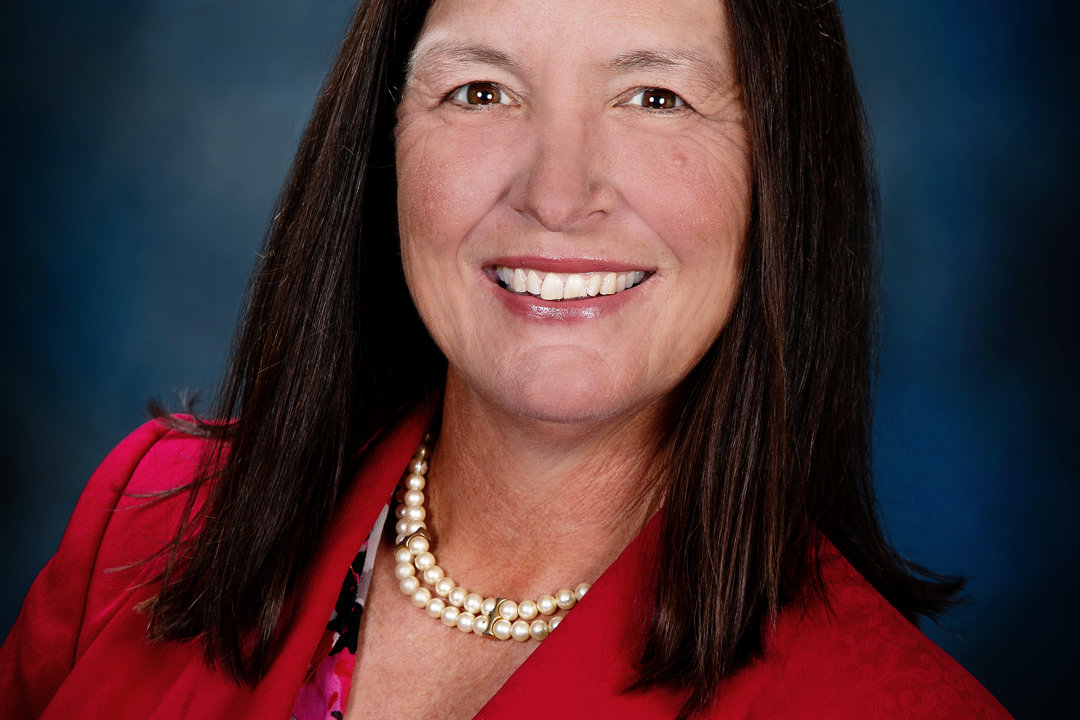
- Practice Management
The Use of Chaperones During Physical Exams
An effective chaperone policy for sensitive exams can protect patients and clinicians alike and can promote trust and confidence.
In today’s world, it’s vital for medical practices to adopt and implement a policy governing the use of chaperones during physical exams. As the #MeToo movement has gained strength, multiple cases involving allegations of physician sexual misconduct have surfaced in the national headlines.
One of these was the case against former USA Gymnastics team physician Larry Nassar who was ultimately convicted of abusing female patients. Because of his conduct, his employer Michigan State University spent years responding to at least 11 investigations and inquiries by state and federal agencies, including a U.S. Health & Human Services investigation that resulted in a corrective action plan.
At the same time, state licensing boards have seen a surge in physician sexual misconduct complaints. In a recent investigation of a physician accused of inappropriate conduct during sensitive exams, the Arizona Medical Board noted that “current standards and practices” require physicians to use chaperones in certain situations. In 2022, the Arizona Osteopathic Board disciplined a physician and mandated that he adopt and implement a chaperone policy the Board provided.
Chaperone policies protect patients and clinicians alike and can promote trust and confidence. If your practice hasn’t yet adopted a chaperone policy, or if your current one needs updating, MICA’s Risk Team can help. To get you started, this article offers recommendations about what to include in an effective chaperone policy, lists steps clinicians can take during sensitive exams to reduce the risk of misconduct allegations, and provides a link to a sample policy like the one adopted by the Arizona Osteopathic Board.
Why use chaperones?
Chaperones may serve several purposes, including:
- Promoting feelings of comfort and safety for patients and clinicians alike;
- Reassuring patients about the professional nature of physical exams;
- Reducing the risk of misunderstandings between patients and clinicians; and
- Providing protection to physicians and advanced health care practitioners against unfounded allegations of improper behavior.
When to Use a Chaperone
Physicians and advanced health care practitioners should provide chaperones in the following situations:
- When patients are disrobed in full or in part for exams, treatments, or procedures involving sensitive areas including breasts, genitals, perineum, pelvic or groin area, and rectum or anorectal area;
- During exams, treatments, or procedures when a patient is unconscious, sedated, or mentally or physically incapacitated (e.g., intoxicated or developmentally impaired);
- Whenever patients or patients’ representatives request a chaperone for any type of exam, treatment, or procedure.
Chaperones should be provided in these situations even if the patient is accompanied by a family member, friend, or other trusted companion.
Pediatric Considerations
- All exams of babies and toddlers should be conducted with a parent or guardian in the room.
- If a parent or guardian is not available or their presence could interfere with the exam, the practice should provide a chaperone.
- Chaperones should be provided for adolescents and teens during sensitive exams, treatments, or procedures.
Who Should Chaperone?
- A chaperone should be a practice employee who has received chaperone training (see below for more information on training).
- Preferably, chaperones should be nurses or medical assistants, not medical students or other trainees.
- Family, friends, and companions should not act as chaperones. If a patient requests this, the clinician should explain the benefit of using a nurse or medical assistant as a chaperone. Allow patients to have a trusted companion in the room, while still providing a member of your health care team as a chaperone.
- Patient wishes and comfort should determine the gender/gender identity of the chaperone. If your practice cannot accommodate the patient’s preference at the time of the appointment, you should offer to reschedule (depending on the acuity of the exam) and use reasonable efforts to provide a mutually agreeable chaperone.
What if a Patient Declines a Chaperone?
- When a chaperone is offered but the patient declines, physicians and advanced health care practitioners are not obligated to conduct the exam (except in cases of medical emergency).
- The clinician should discuss the benefits and purpose of a chaperone and remind the patient of the practice’s policy.
- If the patient still declines, document the conversation in the medical record.
- If the clinician decides not to proceed without the protection of a chaperone, provide the patient with alternatives such as rescheduling the exam or selecting another chaperone or clinician.
- If the clinician conducts the exam without a chaperone, the clinician should document his/her rationale in the medical record.
Documentation when Using Chaperones
Clinicians should always document the medical record to list everyone who was in the room during a visit. The note should be dated and timed and include:
- Name and title of the chaperone and any other practice employee(s) and
- Name and relationship to the patient of any individual accompanying the patient.
Chaperone Training
Practice employees who serve as chaperones should receive training that emphasizes respect for patient dignity, privacy, and confidentiality. Training should be provided annually. Document the date and content of the training in employees’ personnel files.
Consider teaching the following in your training program:
- Ways to show respect for patients’ dignity;
- How to reassure patients who seem distressed or uncomfortable;
- Patient privacy protections, including HIPAA and state statutes;
- When the chaperone should enter and leave the room;
- Where the chaperone should stand or sit during the exam, treatment, or procedure;
- Expectations for chaperone documentation;
- Processes for reporting patient complaints; and
- Processes for reporting observations of potentially inappropriate conduct by a clinician.
Chaperones for Virtual Exams?
Although no physical contact occurs during a virtual visit, a physician or advanced health care practitioner may need to visually examine a sensitive area and discuss the findings with the patient. In this case, clinicians should follow the practice’s chaperone policy and provide a chaperone during the exam.
Let Patients Know About Your Policy
To manage patient expectations, practices should provide information about their chaperone policy when patients first establish care at the practice. The information should be clear and understandable for patients of all education and reading levels and should explain a chaperone’s role and provide a summary of the practice’s chaperone requirements.
Other Considerations for Sensitive Exams
In addition to a chaperone policy, there are other ways to reduce the risk of clinician misconduct allegations and generally make patients feel more at ease during sensitive exams. MICA’s recommendations include:
- Develop written handouts for patients that describe common exams you perform in your practice (e.g., breast examinations or pap smears). Explain the purpose of the exam and provide a step-by-step description of how the clinician will conduct the exam. Provide these handouts in advance of an exam, such as with new patient documents.
- Prior to starting an exam (while the patient is dressed), explain the purpose of the exam and what you will do, and give the patient an opportunity to ask questions. Obtain and document the patient’s consent.
- Before allowing medical students, interns, or residents to be present during an exam, ask the patient’s permission and document any consent.
- Conduct any history taking or other clinical information gathering prior to the exam, while the patient is dressed. This will protect the patient’s privacy and minimize confidential conversations during the exam while the chaperone is present.
- Provide the patient with a gown or other draping garment and allow the patient time to privately undress.
- Wear gloves during the exam.
- As you conduct the exam, tell the patient what you are doing so they aren’t surprised by your next move.
- Integrate principles of trauma-informed care into your practice. Be aware that patients with a history of sexual trauma may experience memories of past abuse during an exam. Commonly used gestures or language may trigger these memories, making the patient feel fearful or uncomfortable during an exam. According to The American College of Obstetricians and Gynecologists, “Because trauma often involves an experience of powerlessness, it is important to refrain from behaviors that a patient may perceive as overpowering or threatening. Common triggers include leaning over a patient during a discussion or pelvic examination, using commands such as ‘try to relax’ before an internal examination, and exposing or touching parts of a patient’s body during a physical examination without adequate warning.”
- Use medical terms to refer to body parts, not slang or jargon.
- Avoid non-clinically relevant comments or inquiries about the patient’s body, sexual orientation, sexual history, or sexual likes/dislikes.
- After the exam, if you are going to discuss any findings, allow the patient privacy to get dressed before the conversation.
Ready to Develop Your Chaperone Policy?
If you’re ready to develop a chaperone policy for your practice, this template is a good starting point. It was adapted from one created by the University of Michigan and adopted by the Arizona Osteopathic Board in a 2022 disciplinary decision.
Questions? MICA members can call on the Risk Team. Contact us at 800-705-0538 or rm_info@mica-insurance.com.

